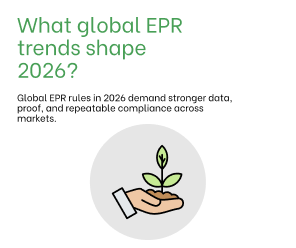W-8BEN vs W-9: Key Tax Forms Explained for Cross-Border Business
W-8BEN vs W-9: Key Tax Forms Explained for Cross-Border Business
Businesses rely on Forms W-8BEN and W-9 to ensure tax compliance and determine whether income recipients are U.S. residents or non-residents. Recognizing their differences is vital for accurate reporting and withholding.
What is Form W-8BEN?
Non-U.S. residents use the W-8BEN, officially titled the ‘Certificate of Foreign Status of Beneficial Owner for United States Tax Withholding and Reporting. This form certifies that an individual or entity is not a U.S. resident and claims a reduced tax rate or exemption under a tax treaty.
What is Form W-9?
U.S. residents use Form W-9, or the ‘Request for Taxpayer Identification Number and Certification,’ to provide their Taxpayer Identification Number (TIN). It ensures accurate tax reporting and withholding for U.S.-sourced income.
These forms help businesses determine whether the recipient of income is a U.S. resident or a non-resident and ensure proper tax withholding or reporting, as the law requires.
What Are the Key Differences Between W-8BEN and W-9 Forms?
| Criteria | W-8BEN | W-9 |
| Legal Status of the Income Recipient | Non-resident of the United States. | US resident. |
| Scope of Application | Income of non-residents from sources in the United States (royalties, interest, dividends, rents). | Income of U.S. residents (income from independent activities, interest, dividends). |
| Objectives | Avoidance of tax withholding or application of a reduced tax rate under tax treaties. | To provide information for reporting the income of a US resident. |
| Form Validity | Valid for 3 years from the date of signature, after which it must be renewed. | Does not expire; remains valid until there is a change in information. |
| Tax Withholding | Can significantly reduce or entirely eliminate withholding tax under applicable tax treaties. | No withholding exemption; used for tax reporting purposes only. |
| Applicability to US Tax Filings | Not used for US tax filings, only for non-resident taxation. | Used for reporting income on US tax filings (e.g., Form 1040). |
| Used by | Foreign persons or entities receiving US-source income. | US individuals or entities providing services or receiving income in the US. |
When Should You Use W-8BEN or W-9 Forms?
Using Form W-8BEN
Non-residents of the United States use the W-8BEN form when they receive income from U.S. sources, such as:
- A German investor receiving dividends from an American company.
- A UAE-based company earning royalties for the use of its software in the U.S.
- A non-U.S. resident patent owner licensing their patent to an American company to confirm eligibility for reduced withholding tax under a tax treaty.
Practical Example:
- Consider a software development company based in Germany that licenses its software to multiple U.S. clients. The IRS requires U.S. clients to withhold 30% of the royalties as tax unless the German company provides Form W-8BEN. By submitting this form and referencing the U.S.-Germany tax treaty, the German company can reduce the withholding rate to 0%, significantly improving its cash flow.
- Similarly, an individual investor from France holding shares in a U.S. corporation can avoid the default 30% withholding tax on dividends by using Form W-8BEN, reducing the rate to 15% as specified in the U.S.-France tax treaty.
Using Form W-9
U.S. residents use the W-9 form to report their income and provide their Taxpayer Identification Number (TIN), such as:
- A U.S.-based company receiving income from other American companies or individuals.
- A U.S. citizen working as an independent contractor for an American company, providing Form W-9 to confirm their resident status.
Practical Example:
- Freelancer Providing Design Services: A graphic designer based in California works as an independent contractor for several U.S.-based companies. Each company requests a completed Form W-9 to document the freelancer’s TIN and ensure they accurately report payments for their services.
- Real Estate Agent Receiving Commissions: A real estate agent in Florida earns commissions from selling properties. The brokerage firm requires the agent to submit a Form W-9 so that it can properly report commissions to the IRS.
- Small Business Providing IT Support: An IT consulting firm in Texas provides managed IT services to various local businesses. The firm’s clients request Form W-9 to confirm its tax identification details and to accurately report payments exceeding $600.
Recommendations for Cross-Border Businesses: Collecting and Storing Forms
To streamline tax compliance and ensure proper documentation, cross-border businesses should:
- Implement secure digital systems for collecting and storing W-8BEN and W-9 forms.
- Regularly review and update forms to maintain compliance with changing tax regulations.
- Train staff on the importance of proper form handling and compliance with tax requirements.
Businesses making payments must determine the tax status of income recipients and request the appropriate form. For efficient tax documentation management in international business, consider the following recommendations:
- Organizing the Collection Process:
- Establish a clear process for identifying the tax status of income recipients (resident or non-resident).
- Request forms at the contract stage or before the first payment.
- Verifying proper completion:
- Ensure that recipients complete all mandatory fields and sign the forms.
- Verify the validity of the Taxpayer Identification Number (TIN) for Form W-9.
- Document storage:
- Maintain a systematic database of W-8BEN and W-9 forms so your business complies with IRS requirements.
- Ensure your business retains forms for at least 3 years after the end of the reporting period.
- Meeting deadlines:
- Ensure your team updates W-8BEN forms every 3 years or whenever the non-resident’s status changes; similarly, update W-9 forms after any changes in the recipient’s details.
- Update W-9 forms after any changes in the recipient’s details.
- Consulting experts:
- In case of uncertainty, consult tax advisors or legal experts to avoid penalties and violations.
Exceptions When W-8BEN or W-9 Forms Are Not Required
Although W-8BEN and W-9 forms are mandatory in many cases, there are situations where their completion is unnecessary. Specifically, this depends on the type of transactions, the parties involved, and the specific conditions set by the IRS. Below are the key cases when these forms may not be required:
- Non-Taxable Transactions in the U.S. If the income or transaction is not subject to U.S. tax jurisdiction, such as transactions between two non-residents outside the U.S.
- Payments Below Reporting Thresholds. In particular, for certain payments under the minimum reporting threshold (e.g., less than $600 for specific income types), the IRS may not require forms.
- Income Exempt from U.S. Taxation. Additionally, international tax treaties exempt certain payments to avoid double taxation, including gifts and grants not considered taxable income.
- Payments to Other U.S. Legal Entities. Furthermore, in certain cases, such as payments to U.S. corporations, Form W-9 may not be mandatory if the income does not require reporting.
- Governmental and International Organizations. Moreover, government agencies, international organizations, and other tax-exempt entities are not required to submit these forms according to IRS rules.
- Passive Income Processed by Financial Institutions. For example, banks or stock exchanges process dividends without requiring additional forms from the beneficiary, provided financial institutions fulfill reporting obligations.
- Other Exceptions Specified by Law. Finally, certain income types or special agreements may fall under exceptions outlined in IRS regulations.
What Are the Penalties for Not Complying with W-8BEN or W-9 Forms?
Failure to comply with the IRS requirements for completing Forms W-8BEN and W-9 can result in significant penalties. For instance, companies that fail to collect these forms may face penalties for improper withholding or failure to report income. Moreover, providing false or incorrect information can also result in fines for both the recipient and the company. Additionally, businesses that fail to withhold the proper taxes due to missing or inaccurate forms may be held liable for unpaid taxes, penalties, and fines. Finally, failure to keep proper records of these forms may result in fines during audits or inspections by the tax authorities.
These forms are indispensable for maintaining compliance with U.S. tax regulations. Therefore, businesses must accurately determine the tax status of income recipients and responsibly manage the collection and storage of forms. By doing so, they can avoid unnecessary withholding taxes and ensure proper reporting to the IRS.
How to Fill Out W-8BEN
Form W-8BEN (Certificate of Foreign Status of Beneficial Owner for United States Tax Withholding and Reporting):
Part I: Identification of Beneficial Owner
- Line 1: Full name of the beneficial owner (individual or entity).
- Line 2: Country of citizenship (individuals) or country of incorporation/organization (entities).
- Line 3: U.S. taxpayer identification number (TIN), if applicable. This is necessary for certain treaty benefits.
- Line 4: Foreign tax identifying number (TIN) — your local tax ID number if applicable.
- Line 5: Address in the foreign country where the beneficial owner is a resident for tax purposes.
- Line 6: Mailing address (if different from the one provided in line 5).
Part II: Claim of Tax Treaty Benefits
- If applicable, specify the tax treaty country and the article under which benefits are claimed.
- Indicate the type of income (e.g., royalties, interest) and the reduced withholding rate as per the treaty.
Part III: Certification
- The form must be signed and dated by the beneficial owner, certifying the information is correct.
When to Submit
Recipients of payments from U.S. sources (e.g., royalties, interest) should submit the form to the withholding agent before receiving income payments.
How to Fill Out W-9
Form W-9 (Request for Taxpayer Identification Number and Certification):
- Line 1: Name of the individual or entity.
- Line 2: The business name (if different from the individual name).
- Line 3: Check the appropriate box for the taxpayer’s classification (e.g., individual, corporation, partnership, LLC).
- Line 4: The taxpayer’s address.
- Line 5: U.S. taxpayer identification number (Social Security Number for individuals, Employer Identification Number for businesses).
- Line 6: Certification of backup withholding status. Most taxpayers will certify that they are not subject to backup withholding, unless directed otherwise by the IRS.
- Signature: The form must be signed and dated by the individual or authorized representative of the entity.
When to Submit. Typically, U.S. persons must submit the W-9 to any payer or financial institution requesting it when entering into contracts or receiving payments that need to be reported to the IRS.



